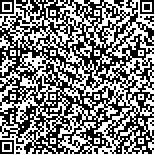| 本文已被:浏览 4945次 下载 938次 |

码上扫一扫! |
|
|
| 针对在轨维护的爬行机器人足粘附机理研究 |
|
苏奕粼1, 侯绪研1, 曹盼1, 薛萍萍1, 唐天峰1, 李龙2, 陈涛3, 姜生元1
|
|
1.哈尔滨工业大学 机电工程学院, 哈尔滨 150080;2.上海大学 机电工程与自动化学院, 上海 200444;3.苏州大学 苏州纳米科技协同创新中心, 苏州 215123
|
|
| 摘要: |
| 针对空间合作目标航天器在轨维护任务需求,提出一种新型结构的空间爬行机器人,可搭载于抓取机械臂上,在主动航天器和故障目标形成连接后,爬行移动到故障目标上需要维修的位置进行维修精细操作。该机器人移动系统主要由压电驱动腿、微修饰粘附足组成。其微观粘附足借鉴壁虎刚毛的粘附机理,设计微米级微阵列的机器人足端结构。在上述结构设计基础上,利用离散元软件建立其仿真模型,对壁虎的强吸附能力和快速脱附能力进行理论建模分析,建立单根刚毛在不同状态下的受力模型,模拟刚毛在不同脱附角下的粘附和脱附的过程,对其单个刚毛的粘附特性进行分析。仿真结果表明:在空间零重力环境下,通过不同运动方式可以实现单个刚毛的吸附和快速脱附的能力。为后续实现机器人足的吸附和快速脱附的能力提供了理论支持。 |
| 关键词: 仿生 微阵列 离散元 粘附力 |
| DOI:10.15982/j.issn.2095-7777.2017.03.015 |
| 分类号:V467 |
| 基金项目:863-704专项资金资助项目(2015AA2256);中央高校基本科研业务费专项资金资助项目(HIT.NSRIF.2017028) |
|
| Research of Adhesion Mechanism in Space Climbing Robot On-Orbit Servicing for Spacecraft |
|
SU Yilin1, HOU Xuyan1, CAO Pan1, XUE Pingping1, TANG Tianfeng1, LI Long2, CHEN Tao3, JIANG Shengyuan1
|
|
1.School of Mechatronics Engineering, Harbin Institute of Technology, Harbin 150001, China;2.School of Mechatronic Engineering and Automation, Shanghai University, Shanghai 200444, China;3.Collaborative Innovation Center of Suzhou Nano Science and Technology, Soochow University, Soochow 215123, China
|
| Abstract: |
| According to the on-orbit servicing requirements of space cooperative target spacecraft,in order to expand the existing manipulator work space and its task function and provide support for the on-orbit control of the spacecraft,a new type of space climbing robot is proposed. The space climbing robot system consists of legs driven by piezoelectric,micro adhesive feet and other parts. The space climbing robot is composed of eight legs driven by piezoelectric which has three joints and five degrees of freedom. It can extend crossing obstacle ability by somersault based on the traditional way of climbing. The robot feet are designed in micro array structure that based on the bionics principle and reference the micro structure on feet of gecko,insects or other creatures. Based on the theory of interface micro mechanics and tribology,the contact mechanics model between micro structure of the adhesive feet and the surface of spacecraft is established. Then it analyzes its adhesive properties based on discrete element method. The simulation results demonstrate that using different ways of movement can achieve different adhesive ability of single seta,which provides theoretical support for achieving the robot foot adhesive and rapid stripping ability. |
| Key words: bionic microarray discrete element method adhesive force |